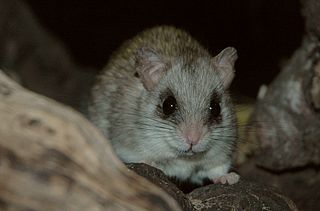 W
WThe acacia rat is a species of rodent in the family Muridae. It is found in Botswana, Democratic Republic of the Congo, Ethiopia, Kenya, Malawi, Mozambique, Namibia, Somalia, South Africa, Eswatini, Tanzania, Zambia, and Zimbabwe. Its natural habitat is subtropical or tropical dry shrubland.
 W
WThe black duiker, also known as tuba in Dyula, is a forest-dwelling duiker found in the southern parts of Sierra Leone, Liberia, Côte d'Ivoire, Ghana, Benin, and Nigeria.
 W
WCantor's roundleaf bat is a species of bat in the family Hipposideridae. It is found in Bangladesh, Brunei, Cambodia, India, Indonesia, Laos, Malaysia, Sri Lanka, Thailand and Vietnam.
 W
WThe Chilean dolphin, also known as the black dolphin, is one of four dolphins in the genus Cephalorhynchus. The dolphin is only found off the coast of Chile; it is commonly referred to in the country as tonina.
 W
WThe Clymene dolphin, in older texts known as the short-snouted spinner dolphin, is a dolphin endemic to the Atlantic Ocean. It is the only confirmed case of hybrid speciation in marine mammals, descending from the spinner dolphin and the striped dolphin.
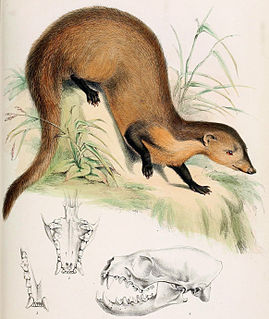 W
WThe collared mongoose is a mongoose species native to Borneo and Sumatra; its presence in the Philippines is uncertain. It is listed as Near Threatened on the IUCN Red List.
 W
WThe dark-footed mouse shrew is a species of mammal in the family Soricidae found in Mozambique, South Africa, Eswatini, and Zimbabwe. Its natural habitat is subtropical or tropical moist montane forests. It is threatened by habitat loss. It was formerly sometimes called the dark-footed forest shrew.
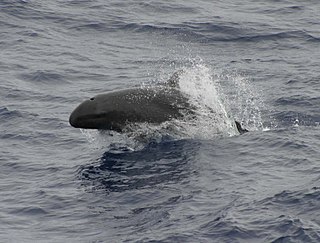 W
WThe false killer whale is a species of oceanic dolphin that is the only extant representative of the genus Pseudorca. It is found in oceans worldwide but mainly frequents tropical regions. It was first described in 1846 as a species of porpoise based on a skull, which was revised when the first carcasses were observed in 1861. The name "false killer whale" comes from the similar skull characteristics to the killer whale.
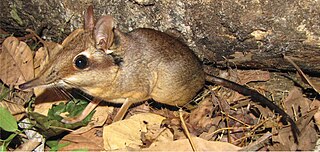 W
WThe four-toed elephant shrew or four-toed sengi is the only living species in the genus Petrodromus, which together with five other extant genera Rhynchocyon, Macroscelides, Petrosaltator, Galegeeska and Elephantulus constitutes the order Macroscelidea. This species is only found in particular regions in Africa and is smaller in size compared to its relatives. A comprehensive recording of this species is lacking.
 W
WThe goa, also known as the Tibetan gazelle, is a species of antelope that inhabits the Tibetan plateau.
 W
WThe grey red-backed vole or the grey-sided vole is a species of vole. An adult grey red-backed vole weighs 20-50 grams. This species ranges across northern Eurasia, including northern China, the northern Korean Peninsula, and the islands of Sakhalin and Hokkaidō. It is larger and longer-legged than the northern red-backed vole, which covers a similar range and it is also sympatric with the Norwegian lemming.
 W
WThe Indian hedgehog is a species of hedgehog native to India and Pakistan. It mainly lives in sandy desert areas but can be found in other environments.
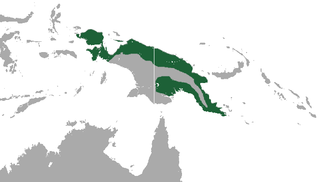 W
WThe lowland ringtail possum is a species of marsupial in the family Pseudocheiridae. It's found in Indonesia, the Solomon Islands, and Papua New Guinea.
 W
WThe melon-headed whale, also, less commonly, known as the electra dolphin, little killer whale, or many-toothed blackfish, is a small- to medium-sized toothed whale of the oceanic dolphin family (Delphinidae). The common name is derived from the head shape. Melon-headed whales are widely distributed throughout deep tropical/subtropical waters worldwide, however they are rarely encountered at sea. They are found near shore only around oceanic islands, such as Hawaiʻi, French Polynesia and the Philippines.
 W
WThe pantropical spotted dolphin is a species of dolphin found in all the world's temperate and tropical oceans. The species was beginning to come under threat due to the killing of millions of individuals in tuna purse seines. In the 1980s, the rise of "dolphin-friendly" tuna capture methods saved millions of the species in the eastern Pacific Ocean and it is now one of the most abundant dolphin species in the world.
 W
WThe Parma wallaby was first described by British naturalist John Gould in about 1840. A shy cryptic creature of the wet sclerophyll forests of northern New South Wales (Australia), it was never commonly encountered and, even before the end of the 19th century, it was believed to be extinct.
 W
WPuma pardoides, sometimes called the Eurasian puma or Owen's panther, is an extinct prehistoric cat. It was long regarded as a primitive species of leopard. Recent work however has shown that Panthera pardoides and Panthera schaubi are actually the same species, and are probably not pantherine at all, but a member of Felinae related to the cougar, making them more properly classified as Puma pardoides.
 W
WThe pygmy right whale is a member of the cetotheres, a family of baleen whales, which until 2012 were thought to be extinct; previously C. marginata was considered the sole member of the family Neobalaenidae. First described by John Edward Gray in 1846, it is the smallest of the baleen whales, ranging between 6 and 6.5 metres in length and 3,000 and 3,500 kilograms in mass. Despite its name, the pygmy right whale may have more in common with the gray whale and rorquals than the bowhead and right whales.
 W
WThe red-flanked duiker is a species of small antelope found in western and central Africa in countries as far apart as Senegal and Sudan. Red-flanked duikers grow to almost 15 in (35 cm) in height and weigh up to 31 lb (14 kg). They have russet coats, with greyish-black legs and backs, and white underbellies. They feed on leaves, fallen fruits, seeds and flowers, and sometimes twigs and shoots. The adults are territorial, living in savannah and lightly wooded habitats, and the females usually produce a single offspring each year. They have lifespans of ten to fifteen years in captivity.
 W
WThe red-fronted gazelle is widely but unevenly distributed gazelle across the middle of Africa from Senegal to northeastern Ethiopia. It is mainly resident in the Sahel zone, a narrow cross-Africa band south of the Sahara, where it prefers arid grasslands, wooded savannas and shrubby steppes.
 W
WThe short-finned pilot whale is one of the two species of cetaceans in the genus Globicephala, which it shares with the long-finned pilot whale. It is part of the oceanic dolphin family (Delphinidae).
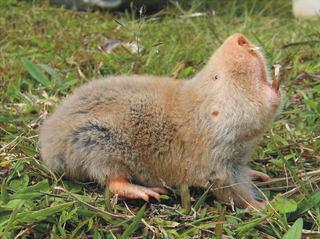 W
WThe silvery mole-rat, silvery blesmol, or silky mole-rat is a species of mole-rat of East Africa which occurs in southern Kenya, Tanzania, southeastern Democratic Republic of Congo, Mozambique and Malawi. Solitary and aggressive, little is known about its ecology or behavior. It is monotypic in the genus Heliophobius. A common species, the International Union for Conservation of Nature has rated it as being of "least concern".
 W
WThe South African pouched mouse or southern African pouched mouse is a species of rodent in the family Nesomyidae, which is viewed as actually representing a complex of at least three undescribed species. It is found in southern Africa in Angola, Botswana, DR Congo, Malawi, Mozambique, Namibia, South Africa, Eswatini, Tanzania, Zambia and Zimbabwe. This species occurs in savanna woodland, as well as various other habitats, at elevations from 50 to 2000 m. It is present in arid regions of Namibia. The rodent is abundant and is tolerant of human disturbance of its habitat.
 W
WSundevall's roundleaf bat, also called Sundevall's leaf-nosed bat, is a species of bat in the family Hipposideridae.
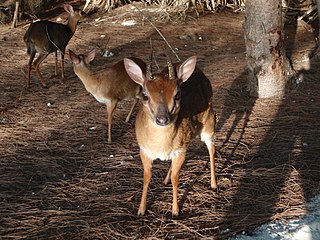 W
WThe Suni is a small antelope. It occurs in dense underbrush from central Kenya to KwaZulu-Natal in South Africa.
 W
WThe toolache wallaby or Grey's wallaby is an extinct species of wallaby from southeastern South Australia and southwestern Victoria.
 W
WWahlberg's epauletted fruit bat is a species of megabat in the family Pteropodidae. It is commonly found across southern Africa.
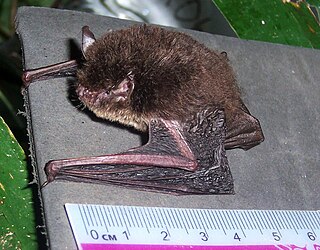 W
WThe wall-roosting mouse-eared bat, or Nepalese whiskered myotis is a species of vesper bat whose type locality is Nepal.